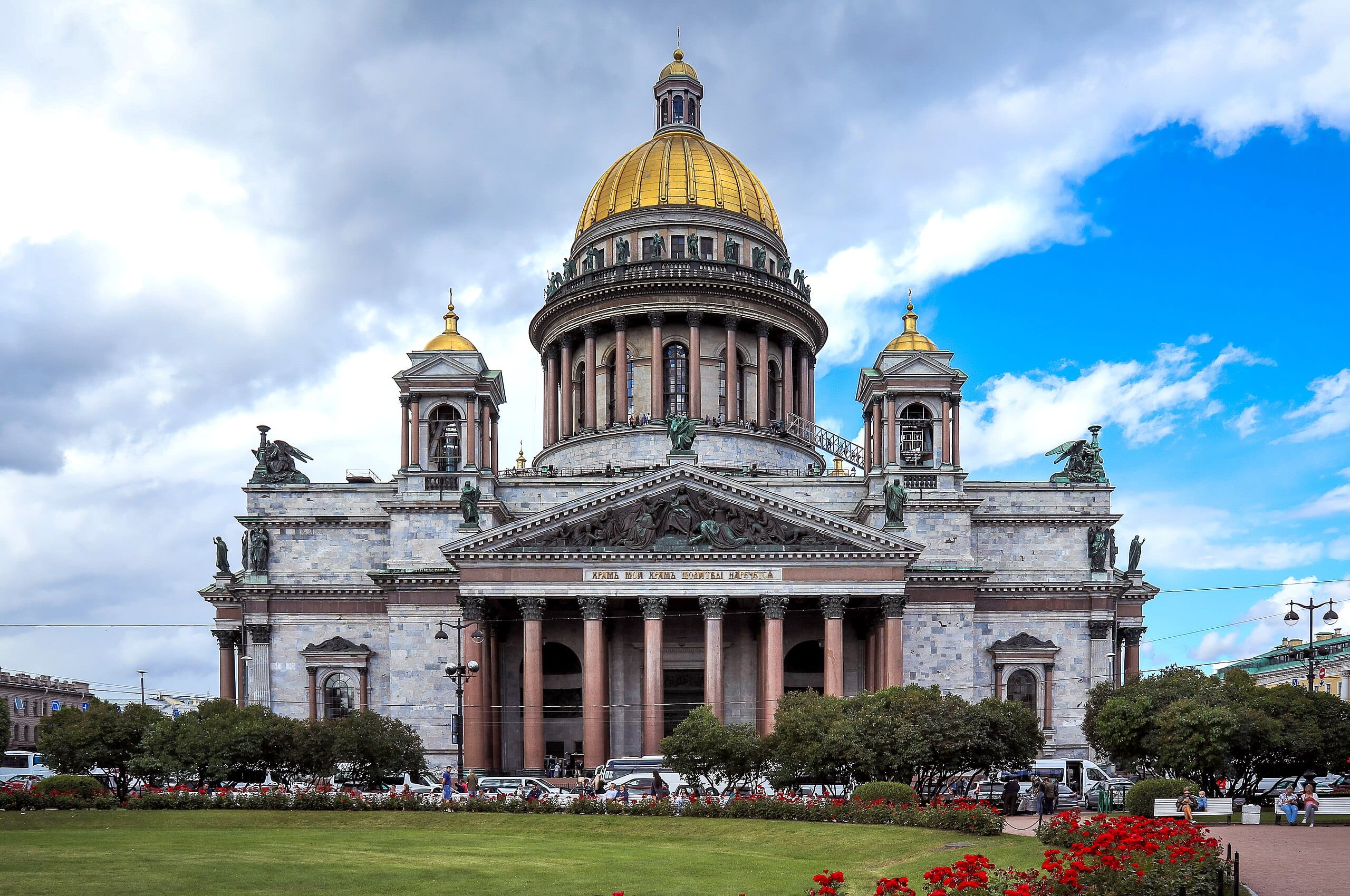There is a widespread belief that they were going to say goodbye to the poet who died in a duel in the largest church in St. Petersburg, but the authorities prevented this. We checked whether this story is true.
March 1, 2024, Russian politician Alexei Navalny buried in Moscow almost two weeks after his death in a colony in the Yamalo-Nenets Autonomous Okrug. Relatives And comrades-in-arms oppositionists were repeatedly reported that the authorities prevented the organization of the farewell ceremony. On the day of Navalny’s funeral, Honored Teacher of the Russian Federation, historian and supporter of the politician Tamara Eidelman published on the social network X post, which received more than 335,000 views and began like this: “When Pushkin died, they were first going to have a funeral service for him in the huge St. Isaac’s Cathedral, and then they were afraid of unrest and, of course, without announcements, they moved the funeral service to the small Stable Church, where only the poet’s relatives and diplomats went.”
The statement that they planned to have Pushkin’s funeral service in the largest church in St. Petersburg is also found in earlier publications. I wrote about this, for example "Nezavisimaya newspaper» in 2019: "When Alexander Pushkin died, the people were told that the poet’s funeral would take place in St. Isaac’s Cathedral, which could accommodate several thousand people. But the people were shamelessly deceived».
St. Isaac's Cathedral is the largest Orthodox church in St. Petersburg. But at the building of the 19th century that has survived to this day there were several "predecessors" - churches, also consecrated in honor of St. Isaac of Dalmatia.
The first St. Isaac's Church appeared in the city in 1710, when a one-story wooden drafting barn at the Admiralty was adapted for services - the building was large enough for a barn, but very modest for the main church of a rapidly growing city. In 1712, Peter I was married in the church, and a few years later they began to build a new one to replace it - a stone one.
The new church was founded in 1717 and was strikingly different from the first, reminiscent in appearance of the Peter and Paul Cathedral, the construction of which began five years earlier. The tall, slender spiers on the bell towers of both temples repeatedly attracted lightning, the strikes of which led to fires and serious destruction. During the next restoration work, it turned out that the main problem of the new St. Isaac's Church was again related to its size - this time it turned out to be not too small, but too large for the insufficiently fortified bank of the Neva. It was decided to dismantle the temple and build a new one a little further from the main St. Petersburg river - on modern St. Isaac's Square.
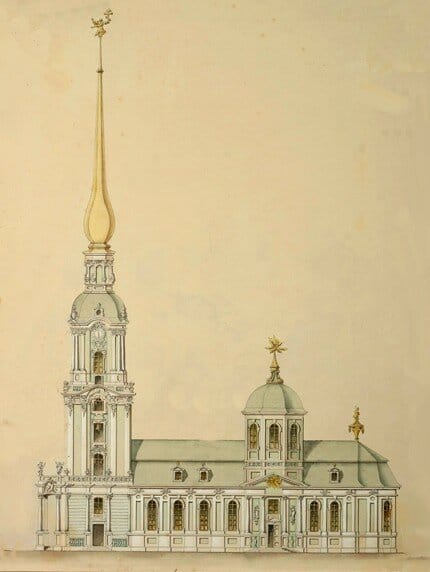
The third version of the church faced an even more difficult fate. The foundation stone of the building took place in 1768 by decree of Catherine II, but after her death, the cathedral's architect, Antonio Rinaldi, left Russia and construction stopped. Paul I instructed Vincenzo Brenna to continue the work (it was already 1798). Due to a reduction in funding, the architect was forced to change the original project: reduce the height of the bell tower, abandon four small domes and cladding the upper part of the building with marble (the lower part was clad under Catherine). As a result, the temple, consecrated in 1802, aroused such conflicting feelings among St. Petersburg residents that just seven years later a new competition was announced - for a project to overhaul the cathedral.
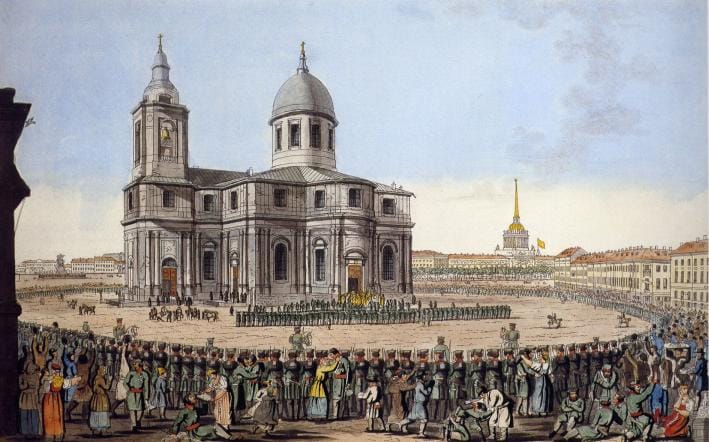
After much ups and downs, the project, at the direction of Alexander I, was prepared by the French architect Auguste Montferrand. Laying the foundation of the fourth St. Isaac's Cathedral began in 1818, work lasted 40 years, and the temple was consecrated only in 1858. Pushkin's death occurred approximately in the middle of the process. At this moment, the cathedral was completely missing the main dome.
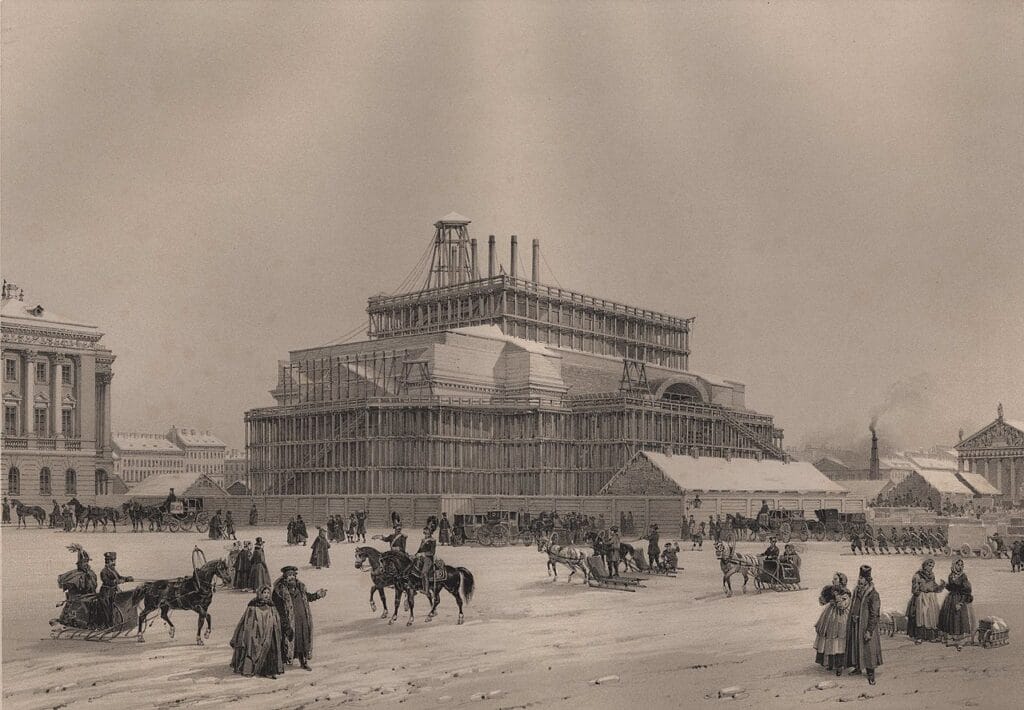
Could Pushkin’s funeral service be held in this building? Definitely not. Nevertheless, an invitation card was preserved, in which the poet’s widow informed that the funeral service would be held in St. Isaac’s Cathedral. The explanation of how this is possible lies in the clarification: “... in St. Isaac’s Cathedral, which is part of the Admiralty.” The fact is that during construction, the liturgical functions of the temple were delegated to a specially equipped room in 1821 within the walls of the nearby Admiralty, in its southwestern part, on the second floor.
The time has come to compare the size of the object “temporarily performing duties” of St. Isaac’s Cathedral and the Church of the Stable Stables. Not everyone will be able to personally visit the first one now (back in the early Soviet years, the assembly hall of the Higher Naval Engineering School was built there). But you can look at both churches on satellite images and find that their main volumes (in the center of the images, the scale is the same) differ slightly - the temporary St. Isaac's Church is only slightly larger than the Konyushenny Church.
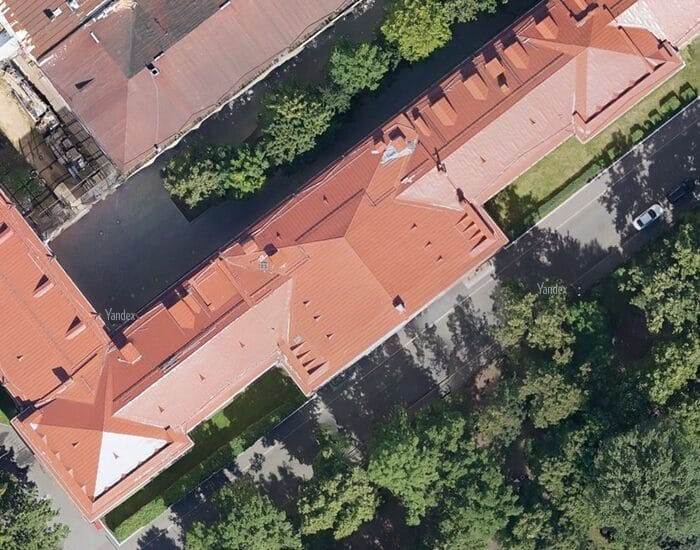
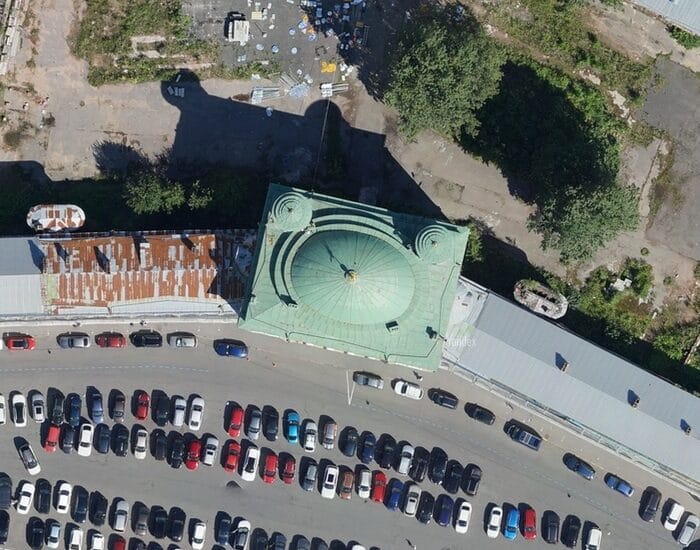
You can also compare photographs of their interiors and come to a similar conclusion.

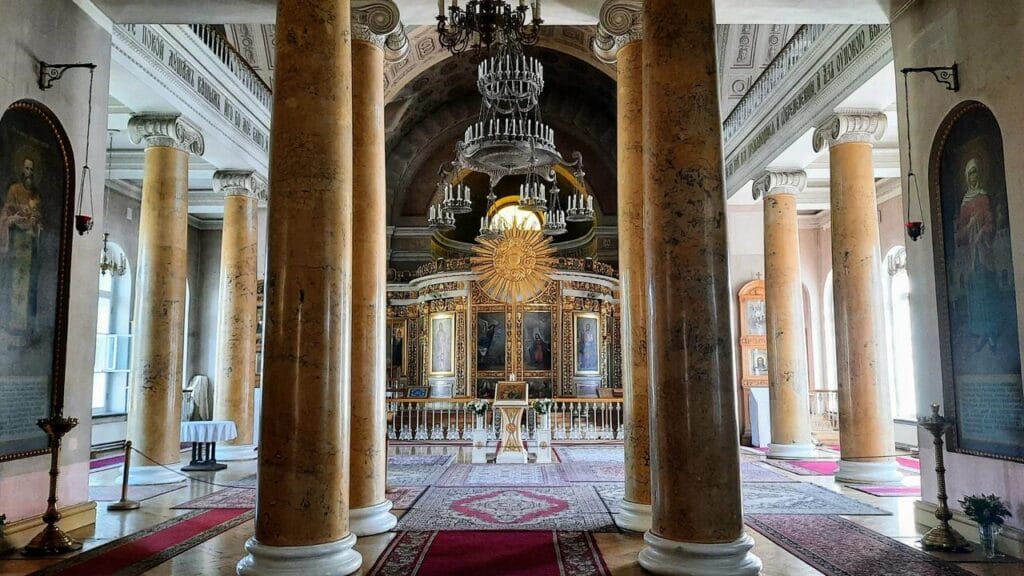
It is unlikely that the funeral service was moved due to such an insignificant difference in the size of the churches. On the other hand, the fact of a sudden transfer of the service to any other place that had not been announced in advance could really complicate public worship of the poet and thereby prevent hypothetical popular unrest. Here's what's about it writes poet and close friend of Pushkin Vasily Zhukovsky in a letter to the head of the Third Department, Count Benckendorff:
“What should the police do if they really could have foreseen something like this? To take with greater vigilance the same precautions that are observed during any ordinary burial, and not to admit to the whole society that the government is afraid of a conspiracy, not to offend people with absurd accusations who do not deserve even suspicion, in a word, not to create the very excitement that she wanted to prevent with her inappropriate measures. Instead, the church designated for the funeral was changed, the body was transferred into it at night, with some kind of secret that amazed everyone, without torches, almost without guides; and at the moment of the removal, for which no more than ten of Pushkin’s closest friends gathered, gendarmes filled the upper room where they prayed for the deceased, they surrounded us, and we, so to speak, escorted the body to the church under guard. What intention could they assume in us? What could they be afraid of from us? I won’t undertake to explain this. And, to admit, being filled with my main feeling, sadness about the end of Pushkin, at the moment of removal I did not notice what was happening around us; It was only after this that it occurred to me and it offended me severely.”
From letters Sofia Karamzina’s brother, writer and historian Nikolai Karamzin can learn that these “inappropriate measures” did not have much effect:
On Monday, the day of the funeral, that is, the funeral service, a countless crowd gathered who wanted to attend it, entire departments asked permission not to work in order to be able to go to pray, all members of the Academy, artists, university students, all Russian actors. The stable church is not large, and only those who had tickets were allowed in, that is, almost exclusively high society and the diplomatic corps, which appeared in full force. <…> The entire square was filled with a huge crowd that rushed into the church as soon as the service ended and the doors were opened; and they quarreled, pushing each other to carry the coffin to the basement, where it was to remain until it was taken to the village.
Karamzina, of course, could have exaggerated a little (for example, in reality, at least four ambassadors were absent from the ceremony), and it is most likely impossible to objectively assess the degree of occupancy of the space in front of the church. But it’s easy to calculate its area - approximately 10,000 square meters. m. This is comparable to the area of Pushkinsky Square in Moscow and gives an idea of the possible size of the crowd.
To be fair, the Stable Church is simply the closest church to the apartment where Pushkin died two days after the duel with Dantes. The distance to it from Moika, 12 is only 330 m, and to the Admiralty - three times more (just over 1 km), if you take the shortest route through Palace Square past the Winter Palace (which was hardly desirable), and more than four times more (1.4 km), if you bypass the imperial residence. To the nearest church sent behind the priest when the poet learned that his wound was mortal and wished to take communion. Yes, the postponement of the funeral service was most likely due to police precautions, but nevertheless, the choice of the final location can be considered quite logical.
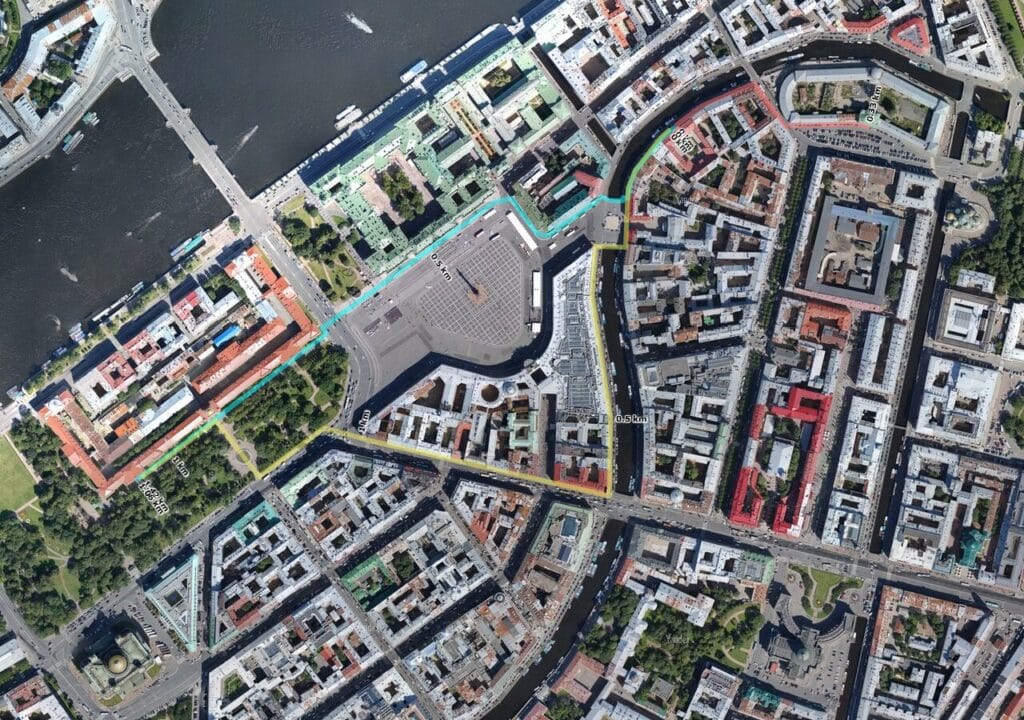
So, Pushkin was indeed initially planned to have a funeral service in St. Isaac's Cathedral, but not in the “huge” one, as Eidelman wrote, not in the temple that is now known by that name, but in the room “temporarily performing his duties.” It differs only slightly in size from the Stables Church, where the funeral service took place. So if the authorities were afraid of unrest, they were not worried about the capacity of St. Isaac's Church in the Admiralty.
Cover photo: Svklimkin / Wikimedia Commons
- G. Butikov, G. Khvostova. St. Isaac's Cathedral
- Is it true that Dumas the Father is Pushkin who faked his death?
- Did psychologist Paul Ekman say that Yulia Navalnaya could not contain her joy and relief when speaking after the death of her husband?
If you find a spelling or grammatical error, please let us know by highlighting the error text and clicking Ctrl+Enter.


